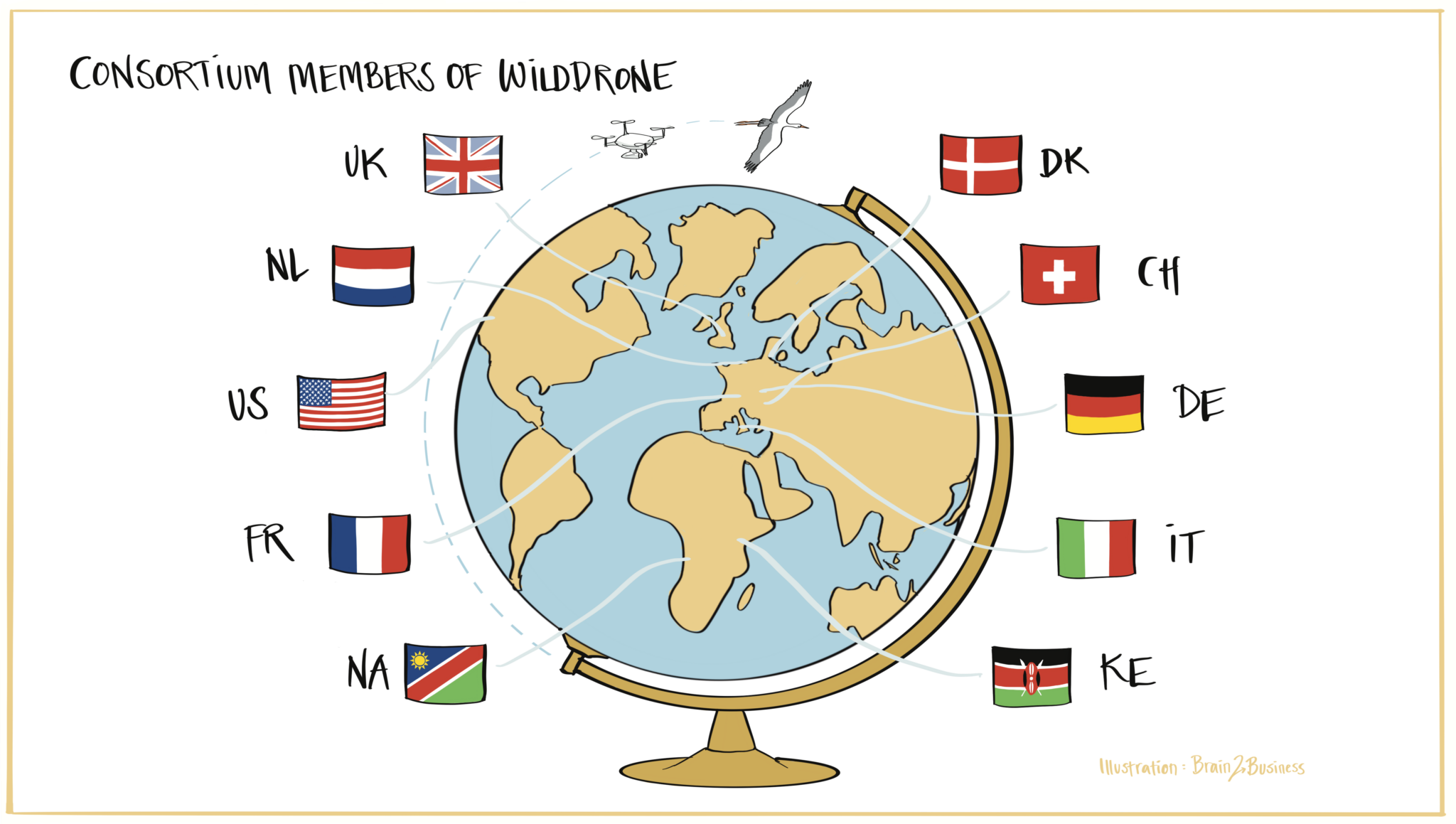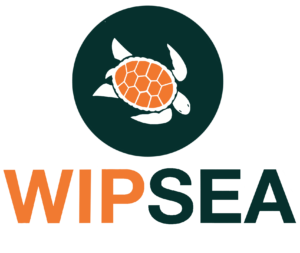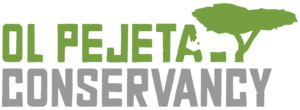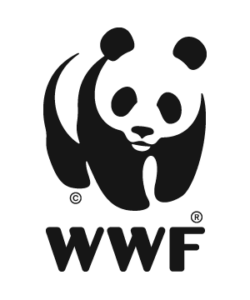Consortium
The WildDrone consortium is made up of 19 partners based in Europe and Africa: Seven leading European and African universities, three research institutions, three wildlife reserves, two high-technology companies, an environmental agency, a world-leading news outlet, an international wildlife foundation, and an industry organisation.
Beneficiaries and Self-funding Partners
Our beneficiaries and self-funding partners have many things in common. They have expertise and status as highly recognized experts that have shaped the relevant research fields in Europe. They also have proven success in university-industry collaboration and have previously been involved in European research projects at the cutting edge of relevant fields. Finally, the university partners enjoy strong positions within international education and training programmes, hold records of research excellence, and their research groups have made solid commitments to doctoral training.
University of Southern Denmark (SDU)
The SDU UAS Center brings together experts in robotics, computer vision, physics, software engineering, mechanical engineering, and cyber-physical systems to focus on research, education, innovation, and collaboration in the UAS domain. The Center is located at SDU’s main campus in Odense and at the SDU UAS Test Center in the HCA Airport near Odense. SDU UAS offers a specialized MSc in drone technology. The Department of Biology covers a wide range of topics from basic questions on the origin of life on Earth to societal challenges such as nature conservation. The Sound Communication and Behaviour Group studies vocal communication at the interface of behavioural neuroscience, biomechanics, robotics, and physiology. They use an integrative, high-tech experimental approach including laboratory, modelling, robotics, and field studies in a comparative setting across a wide range of animals.
Max-Planck-Gesellschaft (MPG)
The MPG supports fundamental research in the sciences and humanities. There are more than 80 institutes around the world, each of which focuses on a specific area of study. The Max Planck Institute of Animal Behavior (MPI) is a new institute that was formerly a part of the MPI for Ornithology (MPIO). Founded in June 2019, the institute undertakes interdisciplinary research to achieve a quantitative and predictive understanding of animal decision-making and movements in the natural world. The MPI maintains on-going collaborative relationships with a variety of international institutions.
University of Münster (WWU)
The University of Münster is one of the largest universities in Germany with a rich and time-honoured tradition. It enjoys an outstanding reputation in the region and far beyond. As a research-oriented university, WWU has made pioneering progress in numerous areas, covers most scientific disciplines, and provides excellent support for interdisciplinary research. The Institute for Geoinformatics (IFGI) is one of the world-leading research institutes in GI Science. Research areas covered include, amongst others, computer vision, machine learning, geostatistics, spatial intelligence. The Computer Vision and Machine Learning Systems Group located at the IFGI has specialized in interdisciplinary research with a focus on computer vision, machine learning and imaging hardware, as well as behavioural aspects of wildlife.
WIPSEA (WIP)
WIPSEA is an SME specialized in digital environmental impact surveys thanks to the use of custom deep learning techniques to detect and recognize wildlife species in photos or videos. WIPSEA was founded in 2013 and has dedicated the last 8 years to research and development projects with partners such as the French Biodiversity Office (OFB) and French marine protected areas, the Obelix research team of South Brittany University (UBS), IFREMER, and France Energies Marines (FEM). Since 2021, WIP has been offering services in aerial images, automated analysis for human activities, and environmental impacts surveys to OFB, FEM, and offshore wind farms builders and managers.
Wageningen University (WU)
WU is a top research and education institute, well known worldwide for its innovative approaches in agriculture and environmental sciences. The Wildlife Ecology and Conservation Group (WEC) study how humans influence wildlife by examining both direct mechanisms like hunting, and mechanisms that are more indirect and part of larger-scale processes, such as climate change. WEC also identify conservation options and test the effectiveness of conservation interventions. WEC embraces field-based, experimental, and theoretical studies, and works at levels of biological organisation ranging from individuals to ecosystems. Its work considers a variety of biomes across the globe.
University of Bristol (UB)
Bristol Flight Lab is the University of Bristol’s centre for multi-disciplinary aerial robotics research. This collaboration of five academic staff brings together over 40 researchers, students, and support staff in the theme of aerial robotics. The lab operates numerous fixed-wing and multi-rotor drones, and has specialist rapid prototyping, avionics, and logistics facilities to support operations in the field. Indoor flight tests are conducted at the Bristol Robotics Laboratory and outdoor test flights at the University’s Fenswood Farm.
The University of Bristol’s Visual Information Laboratory (VI-Lab) exists to undertake innovative, collaborative, and interdisciplinary research resulting in world leading technology in the areas of computer vision, image and video communications, content analysis and distributed sensor systems. VI-Lab was formed in 2010 from building a collaboration across the Departments of Computer Science and Electrical and Electronic Engineering. It now hosts some 70 researchers – one of the largest groupings of its type in the UK.
Fondazione Bruno Kessler (FBK)
FBK was founded in 1962 (then Istituto Trentino di Cultura) as a public research centre of the Autonomous Province of Trento, Italy. FBK strives for scientific excellence, innovation and technology transfer to companies and public services. FBK has more than 350 researchers and developers working in the areas of Information Technology, Materials and Microsystems and Social Sciences. FBK joins the network with its research unit ‘3DOM’, which is located within the Digital Industry Centre and has expertise in geospatial data and methodologies, positioning and navigation, reality-based 3D surveying and modelling, data, and sensor integration, UAV/UGV, GIS, 3D model segmentation and web access. 3DOM has a consolidate know-how acquired in the development of metrology and geospatial software and methodologies for GNSS, photogrammetry as well as optical active sensors problems.
Avy B.V. (AVY)
Avy is a drone manufacturer based in Amsterdam, the Netherlands. Avy designs and manufactures autonomous VTOL/fixed-wing drones as the flagship product of their Drone Networks. These networks additionally consist of interchangeable payloads, a software suite that allows for remote operation and docking stations, which serve as take-off and landing locations. Avy’s clients are active in the medical logistics, first response markets, and in wildlife conservation, and Avy has previously performed several test flights and user research sessions in four different wildlife reserves. Avy is also a member of the Dutch Medical Drone consortium launched in 2019 and a member of the CAELUS consortium, which aims to set up the UK’s first national drone distribution network for medical goods throughout Scotland.
Ecole Polytechnique Fédérale de Lausanne (EPFL)
EPFL is considered one of the best European academic institutions for engineering studies. EPFL has several top-level laboratories in computer vision and environmental engineering and is cutting edge in these domains. EPFL is involved via the School of Architecture, Civil and Environmental Engineering (ENAC) with the Environmental Computational Science and Earth Observation Laboratory (ECEO) at the forefront of the network. EPFL contributes with expertise in interactive computer vision and self-funds one doctoral candidate – this position is financed by the Swiss State Secretariat for Education, Research, and Innovation (SERI).
Associated Partners
The Associated Partners offer expertise and insight into areas relevant for the network e.g., conservation policy and actions. They also contribute to training sessions, host secondments, participate in workshops, help promote the network, and connect it to conservation practitioners in the field and relevant industry stakeholders.
Ol Pejeta Conservancy (OPC)
OPC is a wildlife conservancy in Laikipia, Kenya. OPC exemplifies an integrated conservation model, combining livestock ranching, agriculture, and tourism enterprises to fund biodiversity conservation and community development. OPC is the largest black rhinoceros’ sanctuary in East Africa. Since 2014, OPC has been listed on the IUCN’s Green List of Protected Areas making it one of the first conservancies in Africa to receive this recognition. The IUCN Green Listing aims to define excellence in managing valuable natural areas. OPC experiments with new technologies by using camera traps to monitor wildlife movement corridors, conducting drone test flights, and by implementation of a comprehensive digital radio system.
Wadden Sea National Park (NPWS)
NPWS is a Danish state foundation covering the Wadden Sea National Park and the UNESCO World Heritage Wadden Sea. The foundation works for the protection of the Wadden Sea nature and landscape, conservation of culture and cultural history, and provision of outdoor facilities. It also aims to stimulate science, education, sustainable regional development, and the cross national Trilateral Wadden Sea Cooperation with the Netherlands and Germany. The Wadden Sea is monitored according to NATURA2000 and other national and EU programs, as well as the Trilateral Wadden Sea Cooperation both monitor and collect data for more than 20 cross-national quality status reports covering nature, landscape, nature management, shipping, gas, ports, tourism etc.
British Broadcasting Corporation (BBC)
BBC is a large broadcasting organisation producing radio and television programmes in several studio centres throughout the U.K. It also operates one of the most popular web sites in Europe. BBC is the world’s oldest national broadcasting organisation and the largest broadcaster in the world by number of employees, with over 20,000 staff in total. BBC Studios is the commercial arm of the BBC, overseeing production, international sales, distribution, and global franchises for BBC content. BBC Studios houses 10 unique production brands and is one of the most-awarded British production company in the UK today.
Bristol Zoological Society (BZS)
BZS is a conservation charity that also manages two zoos in the UK: Bristol Zoo Gardens and Wild Place Project. The society’s mission is “To save wildlife through conservation action and engaging people with the natural world”. BZS is involved in 14 conservation programmes focused on 18 target species across 10 countries. BZS has worked in Cameroon since 2016, with the critically endangered Kordofan giraffe as the flagship species. BZS also provides numerous higher education courses from undergraduate level through to Masters, with more than 300 students taught in a purpose-built Conservation Education Centre each year.
Kenyatta University (KU)
KU is one of the largest universities in Kenya and the only university with a comprehensive Aerospace Engineering programme. KU has built its reputation as a thought leader in Aerospace Engineering, with the profiling of several research activities and staff members. KU is currently developing collaborative agreements with drone designers in Kenya for the advancement of robotics technology, as well as pursuing research in the field of unmanned robotics for the purposes of small-scale farmers in Kenya.
University of Konstanz (UKON)
UKON was founded in 1966 and provides flexible structures as basis for international top-level research. While it is one of the smaller German universities with 10,200 students and 209 professors, UKON is nevertheless the number one German university for attracting third-party funding per capita of all academic staff. UKON is home to the Centre for the Advanced Study of Collective Behavior, a Cluster of Excellence funded by the German government that is an international leader in the interdisciplinary study of collective behavior across systems. The doctoral programme will be administered by the Department of Biology, UKON’s largest Department, which has a long-standing history of close collaboration with the Max Planck Institute of Animal Behavior (MPG).
The Danish Environmental Protection Agency (DEPA)
DEPA’s regional branch, MST-Syd, is operative in the Danish monitoring program for water and nature (NOVANA), covering the southern part of mainland Jutland including the UNESCO World Heritage protected Wadden Sea. MST-Syd is also responsible for coordinating the contribution of the Danish ministries to the Trilateral Wadden Sea Cooperation, which aims at protecting the unique nature and features of the area. The branch possesses a broad range of equipment and facilities, such as laboratory facilities, terrain capable vehicles, various monitoring vessels, a wide range of drones etc.
Kuzikus Wildlife Reserve (KWR)
KWR is a former livestock ranch turned into a private conservation area in the semi-arid savanna biome of the Kalahari in Namibia. KWR was one of the first ranches in Namibia to adopt a purely wildlife-oriented Effective Computer Vision for Conservation land-use strategy based on eco-tourism. This allowed for the gradual reintroduction and conservation of threatened wildlife such as the south-western black rhino and cape pangolin while protecting the natural open-savanna landscape habitat from livestock-driven bush-encroachment. Today, KWR represents a state-acknowledged biodiversity stronghold that functions as a local biodiversity steppingstone, and a biodiversity-friendly land-use model within a wider landscape of wildlife-poor livestock ranches.
Danish Agriculture & Food Council (L&F)
L&F represents the farming and food industries of Denmark including companies, and trade and farmers’ associations. L&F promotes the political influence of the agricultural and food sector, implements research and development programmes within food safety and veterinary issues, animal health and productivity, animal welfare, environment etc. L&F also handles the professional interests of its members, including industrial policy and regulatory framework and research and innovation policy.
World Wildlife Fund (WWF)
WWF is the world’s leading independent conservation organisation. Its mission is to create a world where people and wildlife can thrive together. To achieve this mission, WWF is finding ways to help transform the future for the world’s wildlife, rivers, forests, and seas; pushing for a reduction in carbon emissions that will avoid catastrophic climate change; and pressing for measures to help people live sustainably, within the means of our one planet. WWF connects cutting-edge conservation science and technology with the collective power of their partners in the field and their partnerships with communities, companies, and governments. Therefore, WWF aims to maximize the effectiveness of technology for conservation, ecological research, and citizen science.
Get in touch
Contact us on WildDrone@sdu.dk


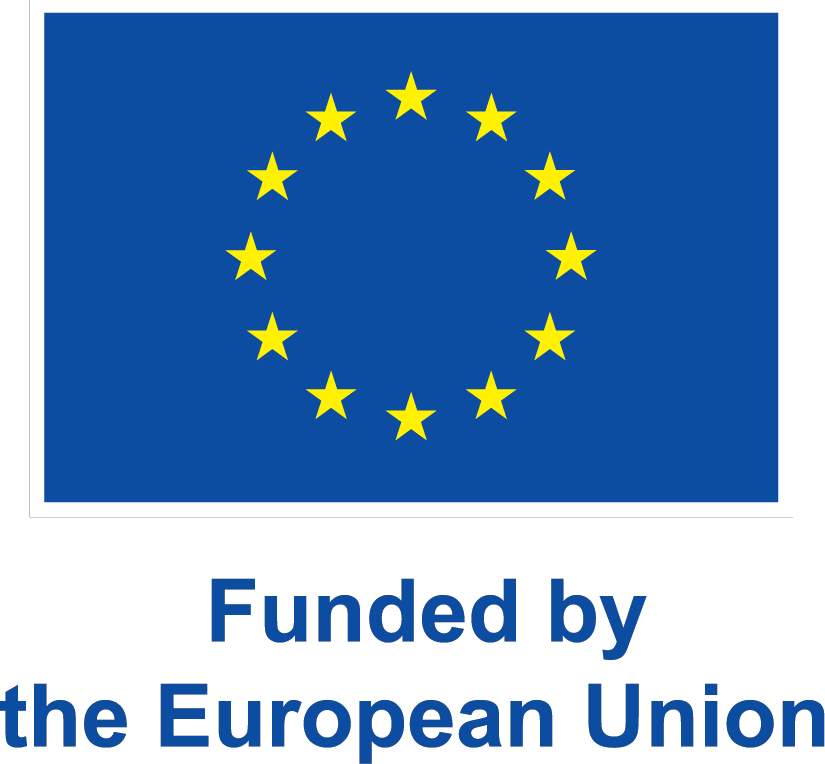
WildDrone is an MSCA Doctoral Network funded by the European Union’s Horizon Europe research and innovation funding programme under the Marie Skłodowska-Curie grant agreement no. 101071224. Views and opinions expressed are those of the author(s) only and do not necessarily reflect those of the European Union or the European Commission. Neither the EU nor the EC can be held responsible for them.
